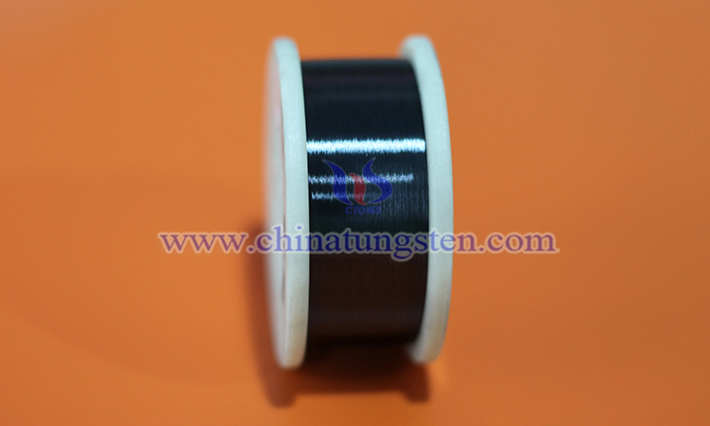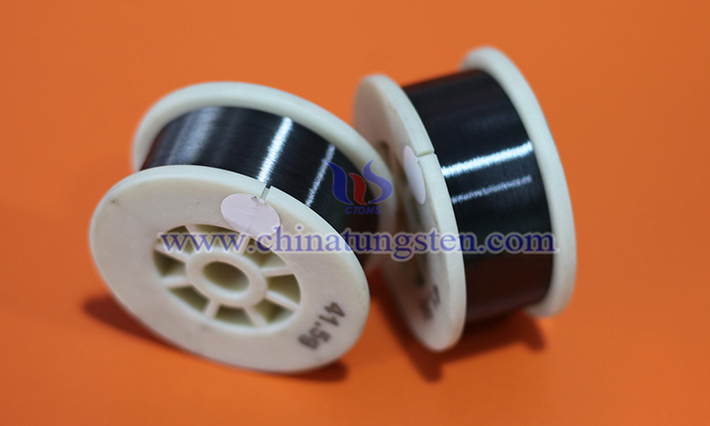Application of Tungsten Wire in Electron Tube Heaters
- Details
- Category: Tungsten Information
- Published on Monday, 11 August 2025 19:15
The application of tungsten wire in electron tube heaters is primarily due to its high melting point, high resistivity, excellent thermal stability, and chemical inertness, making it an ideal material for the heated cathode (heater) in electron tubes.
1. Function and Principle of Heaters
The core function of electron tubes (such as vacuum tubes and cathode ray tubes) relies on the cathode's ability to emit electrons. To improve electron emission efficiency, thermionic emission technology is often used: by heating the cathode to a high temperature, the surface electrons gain sufficient energy to overcome the work function, forming a continuous electron stream.
The heater, the cathode heating element, converts electrical energy into heat through resistive heating, indirectly heating the cathode material (such as thoriated tungsten wire or nickel-based cathodes coated with barium or strontium oxides).

2. Advantages of Tungsten Wire as a Heater
(1) High melting point (3422℃)
Tungsten is one of the metals with the highest melting point. It can remain solid at high temperatures, avoiding failure of the heater due to melting. This property enables it to withstand the high temperature environment when the heater is working (usually far below the melting point, but requires long-term stability).
(2) High resistivity
Tungsten has a high resistivity (about 5.6×10⁻⁸ Ω·m), which can generate more Joule heat (Q=I²Rt) at the same current, improving heating efficiency. At the same time, its resistance changes less with temperature (low temperature coefficient), which is conducive to stable control of heating power.
(3) Thermal stability and thermal shock resistance
Tungsten wire is not easy to crack or deform during repeated heating-cooling cycles, making it suitable for working scenarios where electron tubes are frequently started and stopped. Its low thermal expansion coefficient (4.5×10⁻⁶/℃) further reduces the risk of damage caused by thermal stress. (4) Chemical inertness
In a high-temperature vacuum environment, tungsten is not easy to react with residual gases (such as oxygen and nitrogen), avoiding performance degradation caused by oxidation or nitridation. Even in the presence of trace gases, a dense oxide layer (such as WO₃) will form on the tungsten surface, which plays a protective role.
(5) High mechanical strength
Tungsten wire has excellent tensile strength and ductility and can be processed into thin wires to achieve efficient heating in a limited space.

3. Structure and Process of Tungsten Wire Heaters
Material selection: Pure tungsten wire is relatively brittle, so doped tungsten wire (such as adding potassium, aluminum and other elements) is often used in practice to improve toughness and creep resistance through grain boundary strengthening.
Winding method: Tungsten wire is usually wound into a spiral or mesh structure to increase the surface area, improve thermal radiation efficiency, and reduce heat capacity (accelerate the heating rate).
Insulation treatment: The heater and the cathode need to be insulated, and alumina or mica sheets are often used to isolate them to prevent short circuits. Vacuum Packaging: A high vacuum (10⁻⁴-10⁻⁶ Pa) must be maintained inside the electron tube to reduce gas oxidation of the heater and cathode contamination.
4. Typical Application Scenarios
Electron tubes in radios and televisions: Such as the dual triode (12AX7) and pentode (EL84). Tungsten wire heaters provide a stable heat source for the cathode, ensuring electron emission.
X-ray tubes: High-speed electrons strike a metal target to produce X-rays, requiring a high-power heater to heat the cathode to maintain electron flow.
Oscilloscopes and radar tubes: High-frequency electron tubes require a fast cathode emission rate, allowing tungsten wire heaters to quickly heat up to operating temperature.
Industrial heating equipment: Such as vacuum coating machines and electron beam melting furnaces utilize the high-temperature properties of tungsten wire heaters to process materials.
- Chinatungsten Online: www.tungsten.com.cn
- CTIA GROUP LTD: en.ctia.group
- Tungsten News & Price: www.ctia.com.cn
- Molybdenum News & Price: news.molybdenum.com.cn
- Tel.: 86 592 5129696; Email: sales@chinatungsten.com



 sales@chinatungsten.com
sales@chinatungsten.com